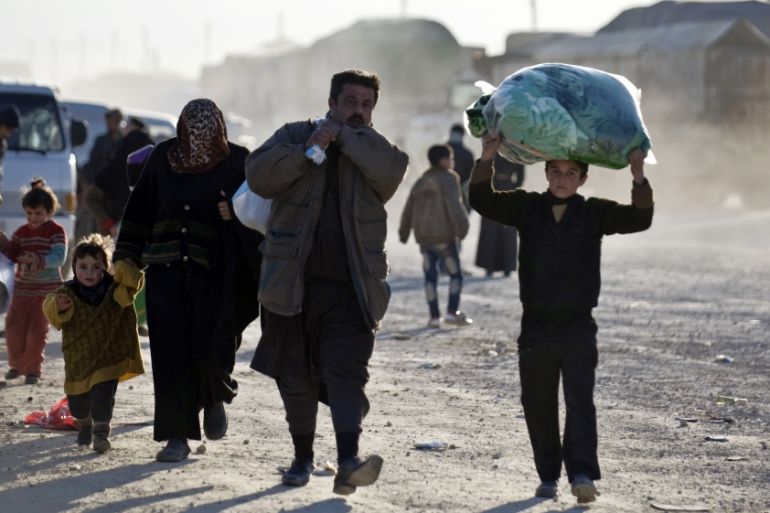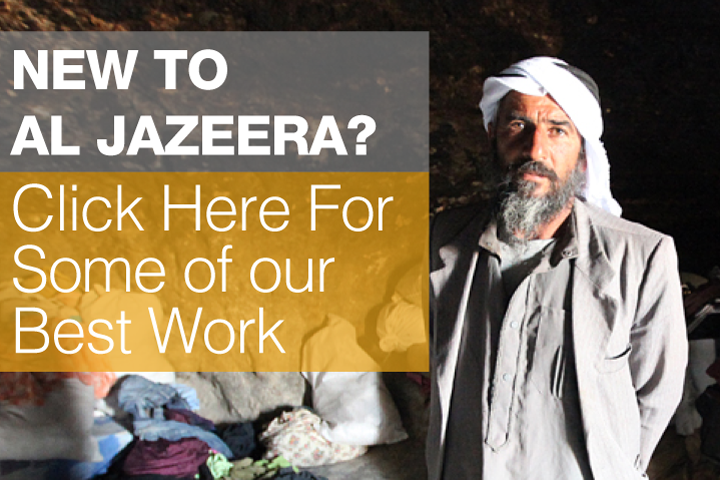A Syria without Syrians
Laying siege on Aleppo would be one among many perils civilians face in this war, but it may also bring a resolution.

The residents of Aleppo knew it was coming – they’d seen it before. From Madaya to Yarmouk, from Fua to Kefraya, the scenes and stories of Syria’s sieges have become synonymous with the savagery of the conflict. Siege-led starvation and barrel bombs are the iconic weapons of Syria’s Civil War as we approach its fifth anniversary in mid-March.
Mercy Corps’ David Evans, whose organisation have been one of the biggest deliverers of aid to civilians in Syria, issued a statement last week saying that “it feels like a siege of Aleppo is about to begin”.
Keep reading
list of 4 itemsIsraeli forces attacked ‘known aid worker locations’ in Gaza: Rights group
NSM-20: ‘Inconsistencies’ plague US assessment on Israel’s Gaza war conduct
Gaza’s mass graves: Is the truth being uncovered?
Food, water, fuel and medicines are being stocked and rationed as opposition groups look nervously towards the land corridor – some 6.5km wide – that remains the only open route out of the city as Bashar al Assad’s regime-led forces close in.
If – or, seemingly, when – Aleppo is fully encircled, it would leave up to 300,000 people still residing in the city cut off from humanitarian aid according to the United Nations. Aid operations outside regime-controlled areas have been bedevilled by access and security challenges over the past five years. As the need has grown larger, the practicality has become ever more impossible.
Aleppo, once Syria’s biggest city, would suddenly become both hostage and bargaining chip in negotiations over humanitarian access and opposition surrender or transfer.
International law abandoned Syria long ago, and the country instead has been replaced by the politics and justice of unbridled violence. Meanwhile, tens of thousands are gathering at the Turkish border in what has essentially become an unsafe “safe haven”.
Syria appears to be less and less about Syrians and instead a chessboard for a multiplicity of conflicts to play out simultaneously. The UN stopped counting the dead back in 2014, but others have persevered in chronicling the country’s tragedy, which has now accumulated to11.5 percent of the population killed or injured.
Already, nearly 50 percent of the entire country has been forced from their homes and life expectancy has dropped from 70 in 2010 to 55 in 2015.
A visitor to the country before 2011 could have travelled to one of Syria’s magnificent castles – Krak des Chevaliers, Citadel of Salah Ed-Din or even the Citadel of Aleppo, and seen how these bastions of war and influence were always prepared for the attrition of siege warfare. Huge granaries, water tanks as big as lakes, salted meats and food stocks were designed to keep a population safe and secure and the enemies beyond the walls.
Today the Citadel of Aleppo is home to snipers who peer through slits once manned by archers. In the city below, civilians have no walls, and even if they did, they couldn’t do much to prevent barrel bombs or artillery smashing on to them from above.
In Syria’s medieval castles, we rely on historians to tell us what happened in the depths of the prisons; today, the UN has a far better picture. Indeed, an extremely grim report released this month documents prisoners who were forced to drink water from toilets, dying of starvation or frequent beatings, untreated infection leading to slow death, and those with chronic illnesses succumbing after being refused medicine.
OPINION: The Syrian Civil War has become a perpetual conflict
Records shown to family members didn’t correspond with the official cause of death; most often presented as heart attacks, with a horrific condition of the body itself. The report surmised that everybody knows what’s happening in the prisons, just as everyone knows the consequence of a siege, and thus, bear a collective responsibility for the action described by the UN “in pursuance of a state policy, amount[ing] to extermination as a crime against humanity”.
The US-Russian “cessation of hostilities” offer sounds good on paper; however, the stalled or suspended Geneva peace process has held ceasefire talks before. Few came to fruition, and others seemed like tactical pauses between offensives, rather than any genuine attempt to stop the killing.
OPINION: Aleppo can be a turning point in Syria’s civil war
Former British foreign minister David Miliband sympathised with the “hell” that people are facing in Aleppo, and earlier this week, the French Foreign Minister Laurent Fabius stepped down, saying the West didn’t have a “very strong commitment” to the conflict.

Increasingly, we’re facing the prospect of a Syria without Syrians. Already, nearly 50 percent of the entire country has been forced from their homes, and life expectancy has dropped from 70 in 2010 to 55 in 2015.
Whereas many of Syria’s sieges have been hidden under the fog of war, laying siege on Aleppo would symbolise the perils facing the civilians as it would be decisive towards any military conclusion. While hope rests on the Kerry-Lavrov plan, the citizens of Aleppo prepare for the worst.
James Denselow is a writer on Middle East politics and security issues and a research associate at the Foreign Policy Centre.
The views expressed in this article are the author’s own and do not necessarily reflect Al Jazeera’s editorial policy.
